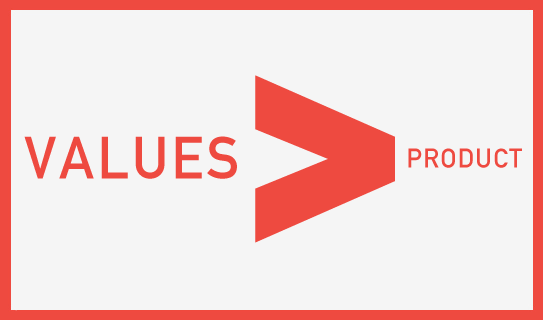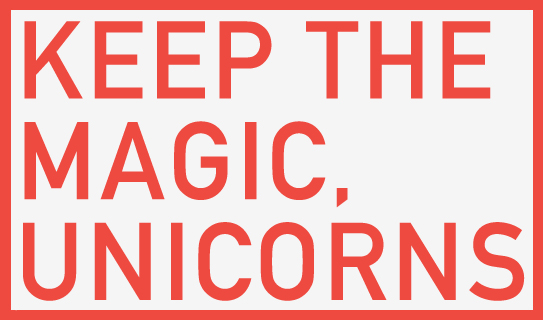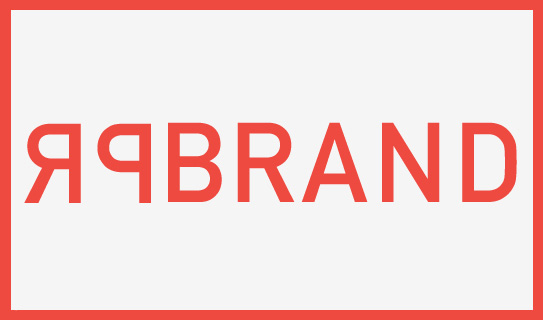Tag Archives: Forbes
Five Ways To Transform Into An Authentic Brand That People Will Love
The full article of below’s excerpt was first published on Forbes on 05/16/18.
How can a brand transform into being authentic when authenticity is the very core of any brand?
Last year, I wrote a book in which I studied commodity brands that people go crazy for in today’s age of innovation and disruption. It fascinated me to think that companies offering commodities — products that people don’t necessarily need more of in the marketplace, and that see no innovation in functionality or design — were flourishing. All of these companies had only two things in common that created their success: fantastic brand thinking and a truly authentic story to tell.
There’s a lot to learn from these brands, even for an established brand that may have lost its authenticity along the way. Here are five traits I saw in these companies and how they can be reinfused into any brand that wants to connect more deeply with its audience:
1. Story
Telling a brand’s story is key to branding and a fundamental element of any marketer’s playbook. Charles Revson, founder of Revlon, famously said, “In the factory we make cosmetics; in the store we sell hope.” Stories can change brand perception more than anything else, but they have to be authentic in order to resonate.
Rewrite a brand’s story by going back to its roots. You have to feel the passion that initially formed the brand, then work your story from there. People love visionaries, problem-solvers, DIYers. They love passion and, in return, will become passionate about your brand.
2. Cause
Lately, we have been “cause-washed” by thousands of startups jumping on the “buy one, give one” bandwagon started by the TOMS and Warby Parkers of the world. Yet there is a reason for their success. According to a survey, almost two-thirds of respondents said they actively seek out brands that support certain causes, and they’d be more likely to purchase from a brand that supports a cause they agree with.
Instead of writing a big year-end donation check or blindly giving a product away for every product purchased, ensure the cause you support is fully integrated into your brand’s messaging and can only be seen as truthful. Base it on a logical proposition that creates an immediate emotional connection with your audience. Plan for it to be expandable as your service or product offering diversifies.
3. Delight
Researching commodity brand sensations, I stumbled upon a slew where the small delights they offered were bigger than the actual product. A great example is pet supply startup Chewy, which takes delighting its customers’ love of their pets to heart. The brand sends out handwritten cards, including the customer’s pet’s name and provides a 24-hour hotline for customers to ask pet-food-related questions. How impactful can the brand trait of simple customer delight exactly be? Well, Chewy was acquired by PetSmart.com for $3.35 billion in 2017, which was a record for an e-commerce company.
The core idea of consistently providing small but thoughtful delights is often the only thing setting brands apart.
If you’re operating in a rather mundane segment, think about which part of your audience is not having fun, then catch them when and where they least expect it and shake them up through delightful surprises. Start with email and slowly work through your entire communication chain. One interaction at a time will make your brand more loved.
4. Transparency
You will likely recall when Avis, which held the No. 2 spot behind market leader Hertz, famously launched its 1963 brand campaign with the tagline, “When you’re only No. 2, you try harder. Or else.” That was sheer brand transparency gold.
Today’s startups enter markets and verticals that have been known for not being truthful. If your brand falls into a category that aches for transparency, comply and tell all. Customers will instantaneously trust your brand as a whole and its products over your competitors.
5. Solidarity
Aligning a brand empathetically with someone else’s dream is a move I saw many startups discover. Often going after an initial niche audience, their entire messaging became aligned around their tribes’ point of view. They exclude everyone else and thrive.
Planet Fitness is a poster child for leading with solidarity. “We don’t judge” is the motto, and “judgment-free zone” is the verbal brand glue that holds its 1,300-plus franchise locations together. Occasional free donuts at the fitness center entrance and tweets about sweets connect more than 6 million members that would otherwise not have easily found their tribe in a traditional gym.
Perhaps it’s time for your brand to wholeheartedly support your tribe’s feelings and actions and, in turn, become one of them. Forming, not forcing, a friendship with your audience is the best way to create long-term brand love.
When Values are Bigger Than the Product: How to Win Hearts Through the Sole Power of Belief
Below article was first published in Conscious Connection Magazine on 04/09/18.
As a brand strategist, I am continuously surrounded and personally obsessed with design and tech innovation. That paused for me last year when my obsession shifted to startups that I saw win hearts (and minds) solely through empathy with their tribes while offering nothing but, what can be seen as, commodity products. I did what one has to do when a subject turns into an obsession and I put pen to paper and wrote a book about this silent phenomenon, which was released earlier this year: ‘Bigger Than This – how to turn any venture into an admired brand.’
I distilled my findings into 8 traits that any venture can use to infuse a deeper meaning into its brand DNA. One of those traits is ‘Belief’ and the exclusive excerpt below will show you how you can launch a seemingly unchanged product or service to great success if it is coupled with strong beliefs:

The financial crisis of 2008 led to uncertainty and unemployment, which led to people losing trust not only in big banks but in other large corporations, too. Not coincidentally, people went frugal and started crafting and cooking again, preferring local eateries and buying artisanal products. Many small brands were born out of consumers’ desire to associate with those they could trust. New tribes formed based on a desire for honest products crafted by honest people – people they can trust.
We are still feeling the repercussions of this shift. Today, we are seeing the biggest of brands distancing themselves openly from politicians whose values don’t align with those of their brand. “While companies are naturally designed to be moneymaking enterprises, they are adapting to meet new social and political expectations in sometimes startling ways,” David Gelles states in The New York Times.
Even Fortune 500 companies understand they have to stay true to their tribe and the values supporters bought into. Today, it is a bigger risk not to speak up. One of the biggest brand rules of all time is “Do not talk politics.” This all went out the window, sparked by a divided America in the 2016 elections and the resulting controversial leadership of Donald Trump. Meanwhile, Brexit took place the same year in Great Britain.
The largest consumer brands from Nike, Starbucks, Airbnb, Apple and Amazon to Uber and Microsoft all spoke out against Trump’s immigration reform. Nordstrom and Neiman Marcus pulled Ivanka Trump’s fashion line. Coca-Cola, Airbnb and even Budweiser aired commercials supporting diversity in obvious opposition to POTUS’ ideologies. REI’s CEO, Jerry Stritzke, spoke out publicly against immigration reform as well as the plan to review 100,000 acres of public lands and urged people to write Secretary Ryan Zinke to keep the protections in place.
These brands are vocal because it is expected of them by today’s consumers.
Their message: We are in this together. We share the same beliefs.
A day after Starbucks pledged to hire 10,000 refugees, the Twitter hashtag #BoycottStarbucks was trending. Despite any lost sales, Starbucks’ decision was a risk well worth taking. The brand had to take a stand in support of the values it shares with the core demographic it serves.
Any brand can stand for something meaningful, but to do that, it has to define and embody its values. Ideally, these values will align with the values of not only their customers and clients, but also the community and their contributions to it. You and the company have to intentionally “live the story that embodies the brand’s values,” local business advocate DW Ferrell, CEO and co-founder of Localism!, told me in an interview I conducted for Forbes.com.
To do that, Ferrell suggests asking yourself, “How will you align profit and purpose? How will your model support your mission?” Part of this entails creating your own vernacular and defining your terms. When you do this and share it publicly with your community, members who share your views will celebrate your values; others may go elsewhere. This forces you to hold yourself accountable. You are saying, “This is our ideal, our identity. Does it resonate with you? Great. We now need to be true to you, because you are behind us.
While spending quality time with my folks back in Austria, I came across shoemaker GEA, a beautiful example of how belief can define a brand. The company produces handmade, long-lasting and easy-to-repair traditional footwear onsite in one of Austria’s regions with the highest unemployment. GEA’s social and environmental record is outstanding.
So far so great, but now add the underlying layer of belief: the shoe company publishes a political newspaper called Brennstoff (translated: Fuel), in which the charismatic owner, Heini Staudinger, boldly voices his opinions on hot topics such as politics, religion and the economy. He pushes the envelope on a very clear and steady social course, one that many don’t appreciate; one that upsets corporations, investors, banks and the government; and one that appreciators truly love. The for-profit company, which is named after the goddess of earth, condemns consumerism and capitalism (even releasing its own currency called “Waldviertler,” which is accepted by 200 regional businesses), yet it attracts so much money through crowdfunding that its team is looking past its many stores to unconventional ways of expanding its operations, such as founding an academy.
Staudinger welcomes the chance to explain his reasons. “I am not very interested in capital. I am very interested in life,” he says in the documentary Das Leben ist keine Generalprobe (Life Is Not a Rehearsal by Nicole Scherg, which I found out was coincidentally produced by my brother’s production firm, NGF).
Being unafraid to exclude the many and to be extremely powerful to the few is what makes a true brand based on shared belief and values truly great. GEA is living proof that going against the grain and staying true to your personal beliefs, even if they are based on extreme political opinions (or religious beliefs), can be a powerful branding tool. It may turn out to be your very own undiluted and uncensored personality that will turn into your brand’s personality, just as it did for Staudinger.
The Belief Commandments:
- Shared values will always have a bigger impact on your tribe than your products alone.
- The only way to deeply connect with your tribe through a shared belief is by deeply understanding your members. This takes a lot of monitoring, listening and, most of all, conversing in an open and non-corporate manner on social media channels as well as in person (at events rather than focus groups, in case you were thinking it was that easy).
- Passionate beliefs, if voiced in an honest, empathetic and bold manner, can become the driving force of your business. Shared values and the expression of passionate beliefs will also likely play a significant role in sparking sales and increasing the value of shares as an added benefit.
Most of us want to create the innovation brand that continuously disrupts our segment. You now know that having a “normal” product or service offering does not mean you cannot connect with today’s customer in a deep, meaningful and sticky way.
You just need to feel the urge to move the needle forward to transform into a brand that has a story to tell and an even better story to live.
How To Ensure Continuous Brand Affection As Your Tech Startup Approaches Financial Glory
[This article was originally published on Forbes on 04/07/17]
We’ve heard a lot about tech IPOs in recent weeks thanks to an instant picture-taking app from Venice Beach going public. Tech companies, some worth as much as small countries, leave many open questions for investors, users and brand managers alike.
As a brand strategist known for my work with tech startups, I was recently interviewed on CGTN on the topic of how these big evaluations and IPOs may negatively affect a brand and its loyal brand advocates:
In preparation for the show, I wrote down tips on how to deal with the associated brand risks for when your tech startup finally hits the jackpot. You never know: A merger, massive round of funding or even the mighty IPO might just happen to you next.

1. Show Your Users It’s Still About Them
Many consumers (or “users”) question high valuations, especially those of tech companies whose products they use on a daily basis. It is difficult to grasp the financial value in broader economic and strategic terms with tech companies that don’t show big profits, yet are worth billions of dollars. This often makes younger consumers belittle and ridicule apps they used to love. It changes perception.
On top of that, it happens that millennials, especially teenagers, are not known for being brand loyal. If they are your power users, communicate your shared values with them, because a billion-dollar valuation is likely not a value they will automatically cling on to. Now, they won’t delete your app unless the brand itself shows obvious signs of change, but once it does, then they’ll jump ship with the simple swipe of a fingertip.
Be ready to over communicate to your users during the time of IPO. Don’t solely focus on talking to the press. Instead, ensure your users hear from you in your proven and authentic tone. During these times of press storms, “surprise and delight” the ones who made you successful in the first place. They need to – and deserve to – hear from you.
When Google filed its IPO back in 2004, it integrated mathematical (aka “geek”) humor all the way into their filing papers. The value of the offering was equivalent to the mathematical constant e (2,718,281,828). It was a great way to be true to its brand aura even during this risky and otherwise very dry period, giving brand advocates buzz to share.
2. Reinstate And Reignite Your Company Culture
IPOs of young companies easily result in company culture breakdowns. With significant growth and financial backing often comes a hiring spree with leadership changes, added levels of management, and plenty of processes, not to mention the formation of a board of directors. This is the time of internal employee joy – and fear.
Now that the financial success is taken care of, go back in time and think about what type of company you wanted to create in the first place. Have you reached the goal of birthing your dream company, beyond in financial terms? What culture did you want to create? How did you want to inspire your staff? Write down those values at this very important moment in your brand’s history and have your marketing and communications team draft a plan to reinstate them into the company at this time of change. Understandably, during times of an IPO, they are all slammed and are already working overtime. That indeed makes this additional project even more important; they will thank you later.
Being a true brand that is met with admiration is all about trust and authenticity, both of which have to come from the top in order to trickle down from the brand to its users.
3. Don’t Instantaneously Disrupt The Experience You Meticulously Crafted Over Years
An app is both an extremely personal as well as an extremely emotional experience. Users focus on their own tasks and the app is mainly a facilitator in their lives, from booking a room, to taking a picture, to sharing their world with others in their circle. This personal experience is never about the company that created the app; it’s about the user and other users. An app is not a fashion brand that users wear like a badge of belonging; instead, most tech brands are functional extensions of daily lives and the user content a reflection of their own personalities.
The sudden press surrounding an IPO, a high evaluation, a huge financial investment boost or a merger will create a fear of change in their experience with the app and a fear of a change in the integrity of the brand. With money often comes corruption, or so your users have heard. Make sure they know where you are heading with the company and why all of this talk about a big financial boost will result in an even better personal experience for them.
When Something Isn’t Broke, Fix It: Restarting Your Brand At Its Height
This article was originally published on Forbes on 10/20/16.
Do you know that feeling when you are so inspired by something that you’re left speechless, puzzled and somewhat confused? Perhaps you’ve experienced it from a natural wonder, an incredible speech, a mind-blowing innovation you read about, or simply something your newborn does. Well, I had that moment while watching Netflix.
I know that sounds peculiar, but when I watched the first episode of Netflix’s second season of “Chef’s Table,” the show that dives deep into a specific renowned chef’s way of thinking, it took me a day or so to sort everything I learned into nuggets of insight. The episode starred American superstar chef Grant Achatz. But it wasn’t the balloon cheese dessert, the fact that he overcame cancer (stage 4 squamous cell carcinoma of the mouth) and was known for years as “the chef who couldn’t taste,” or his quest to reinvent meals daily that inspired me. It was his relentless creative drive that left me speechless.
His quest to transform something (food, in his case) into an emotional experience is remarkable; this is also why I do what I do at my brand consultancy. When I work with startup entrepreneurs on deriving their new venture’s philosophy and shaping their brand’s strategy, voice and image, triggering emotions is key to this journey – and to my own overall personal happiness.
The fact that Achatz would have considered his first restaurant a failure unless it would quickly turn into one of the very best in the country (it achieved that goal, being named the second best in the U.S.) was insane – insane in an inspiring way. What really struck me though was the fact that at the height of his restaurant’s success, he decided to close it and reinvent it from the ground up with new interiors and a completely new menu. For a three-star Michelin restaurant, that is as risky of a business move as there is. Digesting this indisputably progressive way of thinking, and translating it to other brands, got me excited.

Who else would a brand reinvention this sudden and complete apply to? And why? To find out, I pose a few questions that will help guide you down the path of boldly diving into ice cold branding waters, in case that disruption applies to your business.
1. What Is Your Brand’s DNA?
Knowing what your brand stands for, its single most important objective, and the values that are at the core of it are the most crucial ingredients of branding, ones that I spend ample time crafting with my clients. If that DNA of your brand ends up being best described by the word “innovation,” you are intrinsically forced to implement that thinking across the board.
If that drive for change and reinvention also drives you as the founder, you can not sit back and put success on autopilot. You must constantly go back and rethink, “How would you do this from scratch today?” If the house were to burn down today, figuratively speaking, how would you piece it back together? Likely, you would not literally piece it back together. Instead, you would rethink its purpose, location and foundation from the ground up and opportunities would pile up in front of you.
2. What Is Hiding Behind The Outward-Facing Success Of Your Brand?
No one is perfect and no brand is purely a glimmering success. You know it and I know it: There’s baggage hidden in the drawers of every operation.
Creating a list of even the smallest things that require fixing may soon turn into a notebook full of ideas and opportunities. These may turn a call for complete reinvention into an outcry for action; action to turn into the best your brand could possibly be. If you hear that inner call, you can’t forget it.
3. Is Another Brand Too Close For Comfort?
Are there startups that are knocking on your industry’s door? Competitors that are racing to take your place? The likelihood of this answer being “yes” is high, but I encounter two types of entrepreneurs: The ones who proactively act upon that knock on the door and the ones who push forward, resting on their share of the market.
In Achatz’s case, the knock came from another Chicago restaurant that just earned a three-star Michelin rating, giving him a local head-to-head competitor for the very first time. That was enough to make him act upon it.
When you see the first signs of competitors racing to take your place, it may be best to completely switch course. That is, “when everybody zigs, zag,” as author Marty Neumeier advises companies do in order to outsmart their competitors by taking a bold move to differentiate.
4. Do You Wake Up With The “Now What” Syndrome?
Many successful founders secretly wish they would not have been quite as successful with their first venture, as they sometimes feel trapped by the success they have created. They build their company into a comfortable and successful venture, then they don’t see a way out while they have many other entrepreneurial passions and ideas. Hiring another CEO feels daunting.
Most of the time it is solely the founders who are imposing that limitation on themselves. If you are one of them and you have many thoughts that would answer the question “now what?” a brand revamp might not only outsmart your competitors, surprise and delight your customers, but also reinvigorate your own life. That is something that should be on top of your list at all times.
Congratulations on your brand’s success – now please start over.
Crazy? Perhaps.
A genius move for the right type of entrepreneur and brand? Most definitely.
Public Relations And Brand Overlap Far More Than You Think
This article was written by Rebekah Iliff and was originally published by Forbes on 09/01/16.
In below article, Rebekah Iliff, Chief Strategy Officer at AirPR, discusses the intersection of branding and PR; an intersection too obvious to ignore, yet one that remains ignored too often. With her permission, and as my book is being referenced throughout (well, thank you!), I now like to share her thoughts with the readers of The New Brand Post. It goes something like this:

Without intending to, a company’s departments sometimes end up working in ineffective silos. A tech team without communications professionals can’t shed light on their achievements uber-effectively. An innovative ASMR advertising campaign can’t get many kudos without public relations, and the news of a rebrand can’t spread as fast organically as it can with media outreach. Stitching together cross-functional teams leads to greater innovation and opportunity.
At the same time, there’s a bit of a stigma about bringing too many cooks into the kitchen. Does your art director really need to help approve the imagery you’re sending to a journalist? Does your public relations department really need to know if the copy team is writing a spur-of-the-moment April Fool’s Day display ad before it goes live? In both situations, the answer is yes.
It may take longer to loop in other teams, but it’s worth it. Which brings us to two teams that frequently overlap without many people realizing it: public relations and brand strategy. These teams are often severed from contact, even though it’s paramount that they work together. Together, they are more effective, as both teams deal with messaging, public perception and customer touch points.
Fabian Geyrhalter, Principal and Founder of Los Angeles-based design and branding agency FINIEN, recently released the second edition of How to Launch a Brand, which covers everything from brand positioning and naming to brand identity. He’s launched more than 50 brands – large and small – and knows that brand strategy is more effective when it’s backed by an integrated PR and communications plan. Here are three ways public relations and brand strategy teams are related and why it’s important, according to Geyrhalter, a fellow Forbes Agency Council member.
1. PR and brand teams both focus scrupulously on messaging penetration
While copywriters, often living on branding or creative teams, work to align copy with a brand’s voice guidelines, public relations teams align messaging with a brand’s key ideas. In that sense, branding/creative and PR teams are the two wings holding a company accountable for what it communicates to the public, from board members to customers and journalists.
“Consumers respond to brands that have a coherent and straightforward message,” Geyrhalter writes in his book. “Equally important to your message is selecting a distinctive voice and persona for your company. The audience demands authenticity, and your brand’s voice must be authentic and transparent.”
As an executive at a PR tech company, I see Fitbit as a successful brand that has these teams in coordination. Think about Fitbit’s brand voice: It’s clear, concise, encouraging and motivational. If copywriting contradicts the foundational messaging a PR team is using, misalignment occurs and it can chip away at credibility long term. Imagine if Fitbit sent you a marketing email encouraging you to get a few extra thousand steps in today, while its CEO was quoted in a popular health magazine saying steps don’t matter, only calories. Customers may not notice, but journalists likely would; “misaligned” isn’t a way you want your brand to be perceived.
2. Public perception is jointly owned by public relations and brand
While copywriting and graphic designers and/or UX design control public perception of a brand from a customer standpoint, public relations and communications teams control public perception from the standpoint of investors, board members, influencers (from journalists and analysts to bloggers), and more.
It’s like the two sides of a vanity mirror. On the magnified side, PR people share intricate details with the press who view brands under a microscope. The other side shows a clear, customer-facing view of said brand. Both are needed in order to properly display your “face.”
3. Branding and public relations both pivot upon personas and personalities
Both branding and public relations teams give companies real, human faces through characters and spokespeople, some of whom are real employees, some of whom are figments of our imaginations.
“Characters give the audience someone to root for and follow,” writes Geyrhalter, referencing Mr. Clean, Virgin’s Richard Branson, and Dos Equis’ “Most Interesting Man in the World” as personalities that have garnered impressive followings.
Natural foods brand Kashi is another example Geyrhalter mentions in his book. Kashi has taken a different approach in leveraging its real employees as brand ambassadors, showcasing how its actual team members live and breathe the Kashi lifestyle.
“Thinking of your brand as a person will help you create an authentic voice that will connect with consumers,” writes Geyrhalter. He suggests writing a list of adjectives that describe your brand or writing a faux obituary that includes a list of life accomplishments to better illustrate these personas. How would the brand persona be remembered?
In public relations and communications, real spokespeople – from CEOs who can speak to high-level strategy to CFOs who can talk publicly about financial matters such as an IPO behind a brand are what the public and journalists want (versus boilerplate messaging penned by a PR professional).
Next time you’re poised to launch a PR campaign, perhaps take a moment to ask yourself if the brand is represented fully in every aspect of your company’s outward facing narrative. In other words, are you certain that brand and communications are effectively working together?




